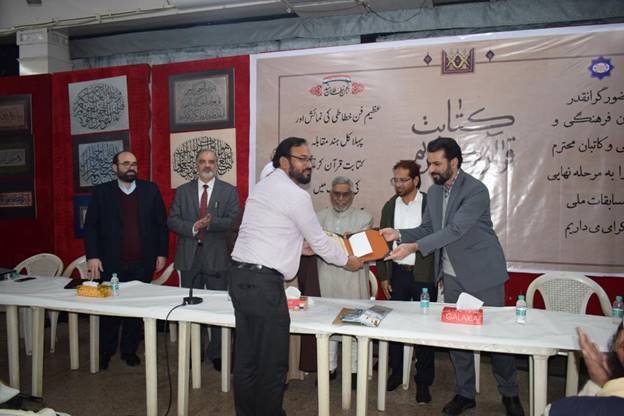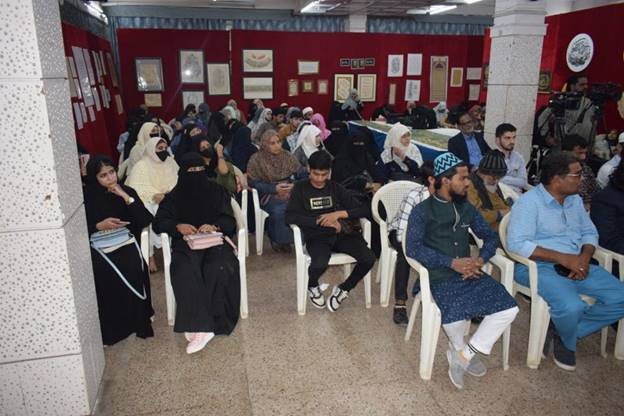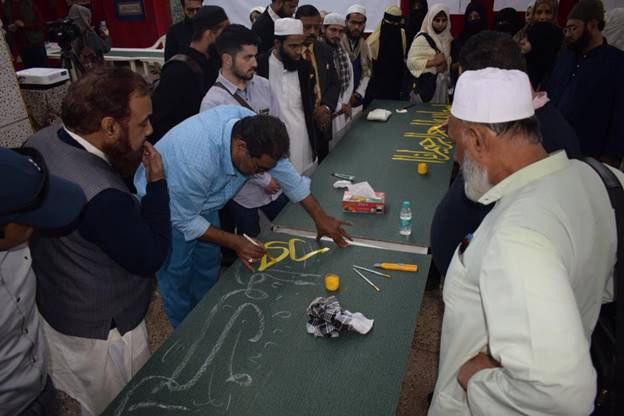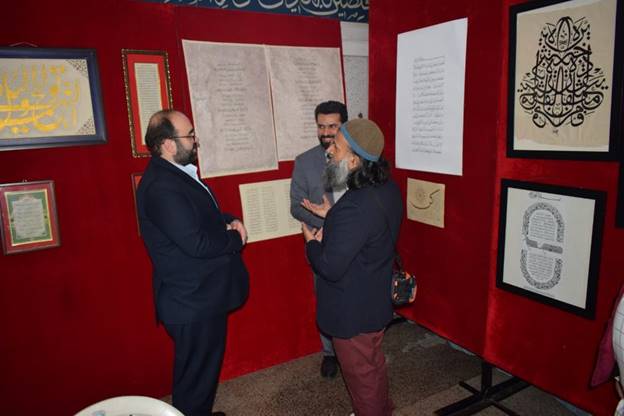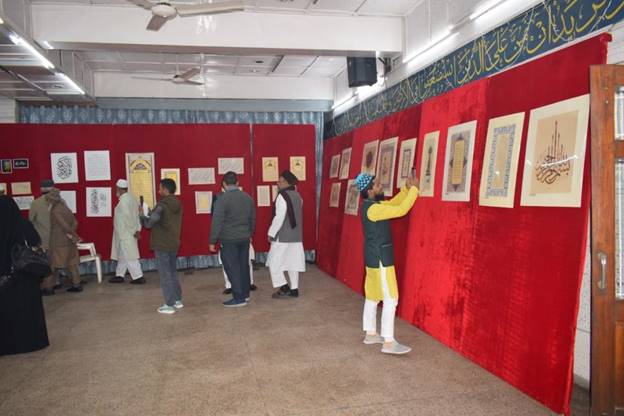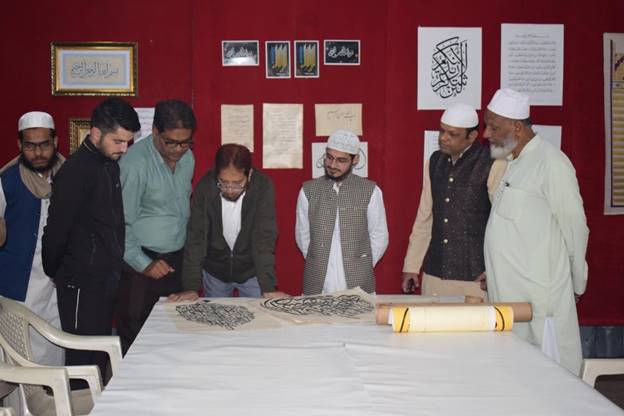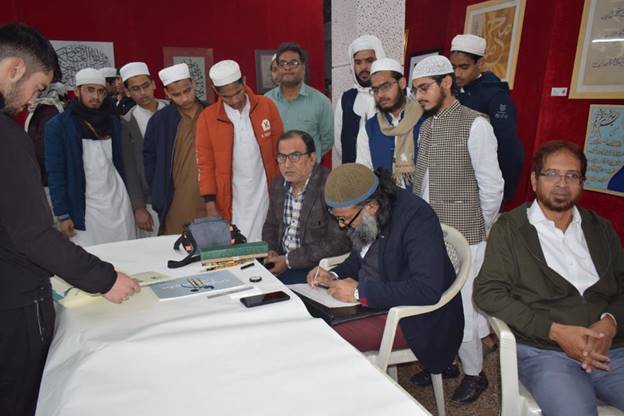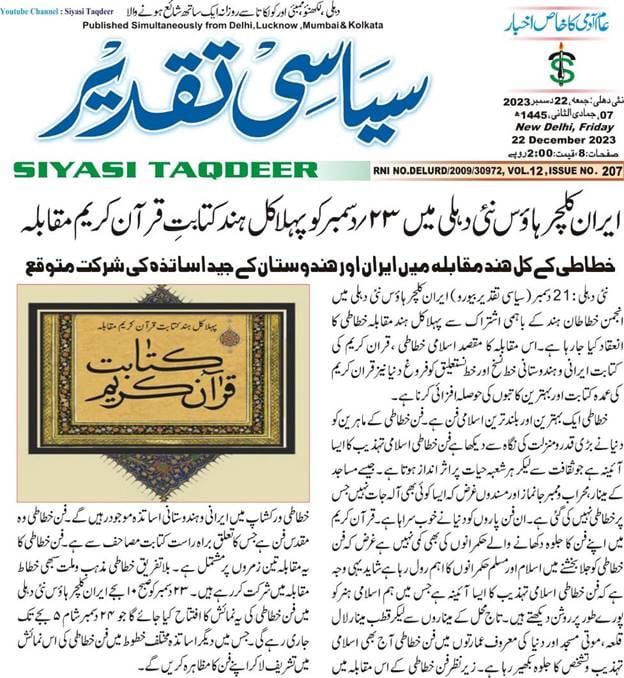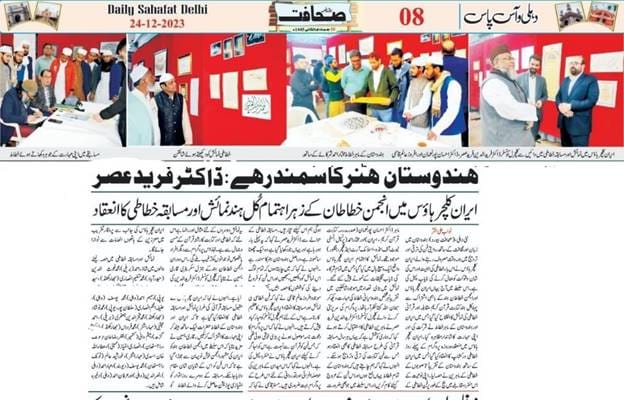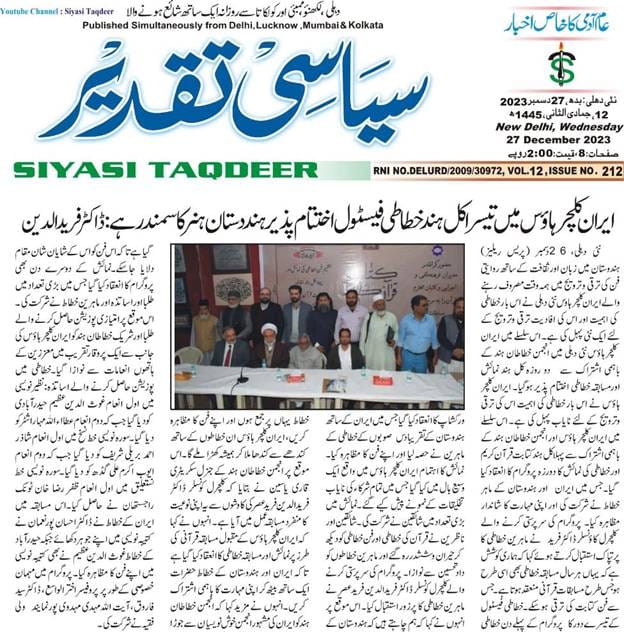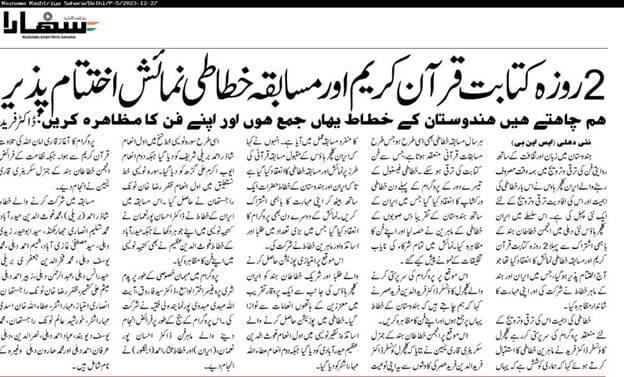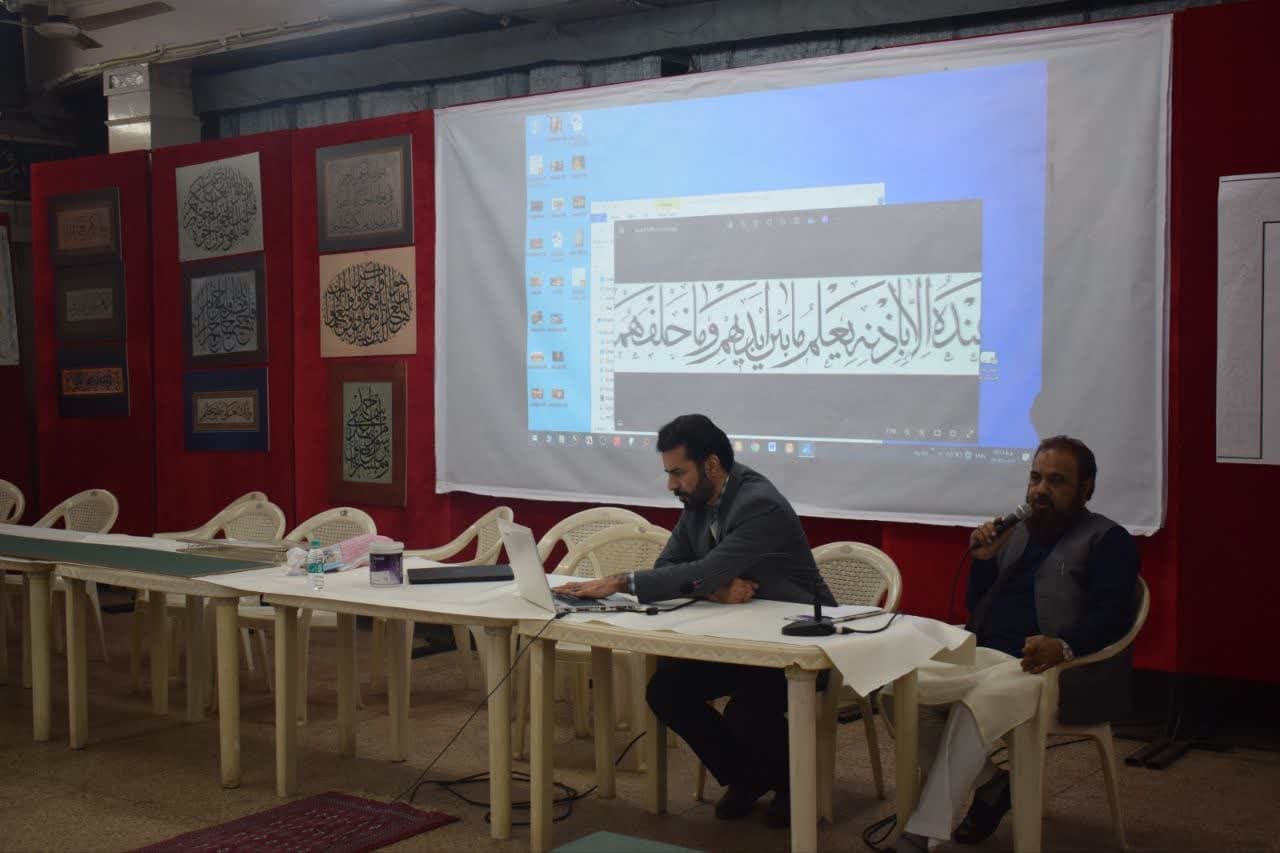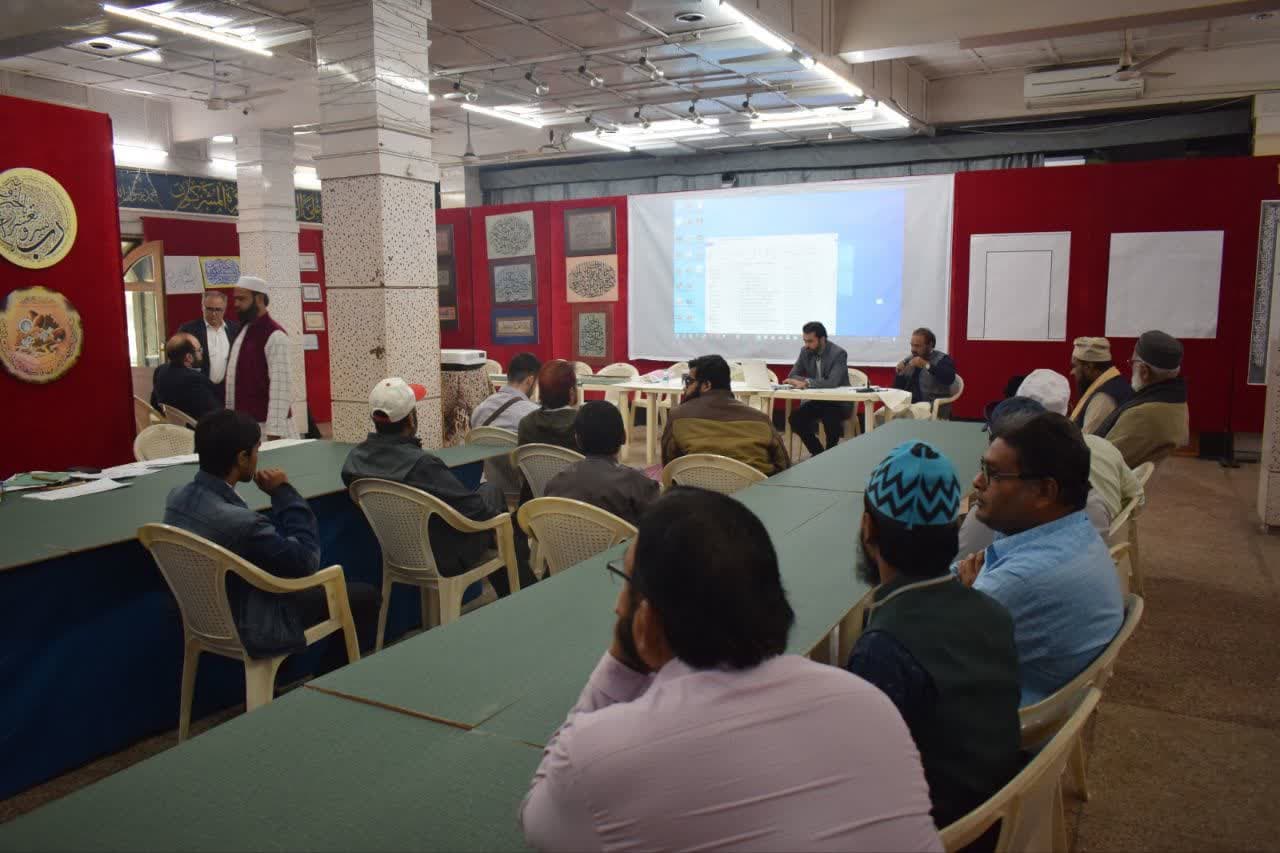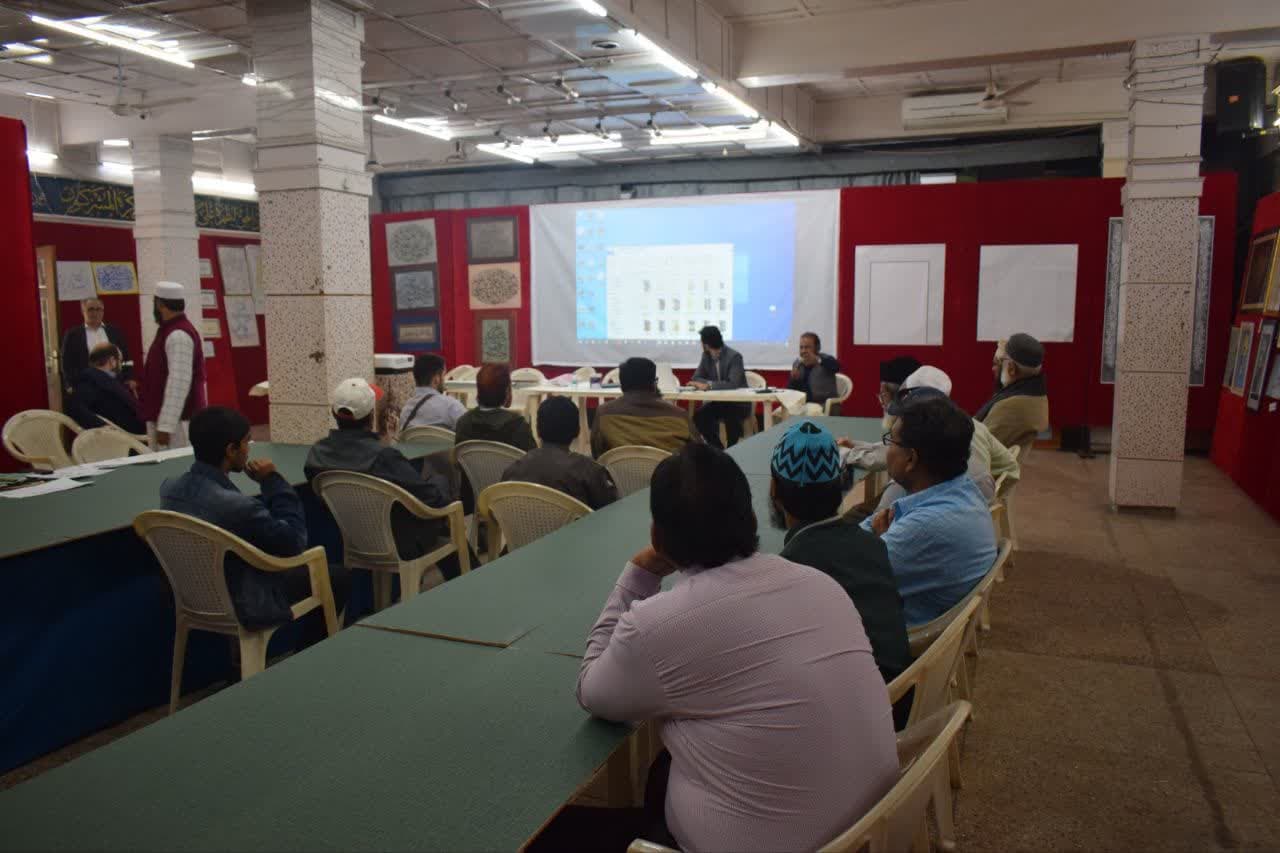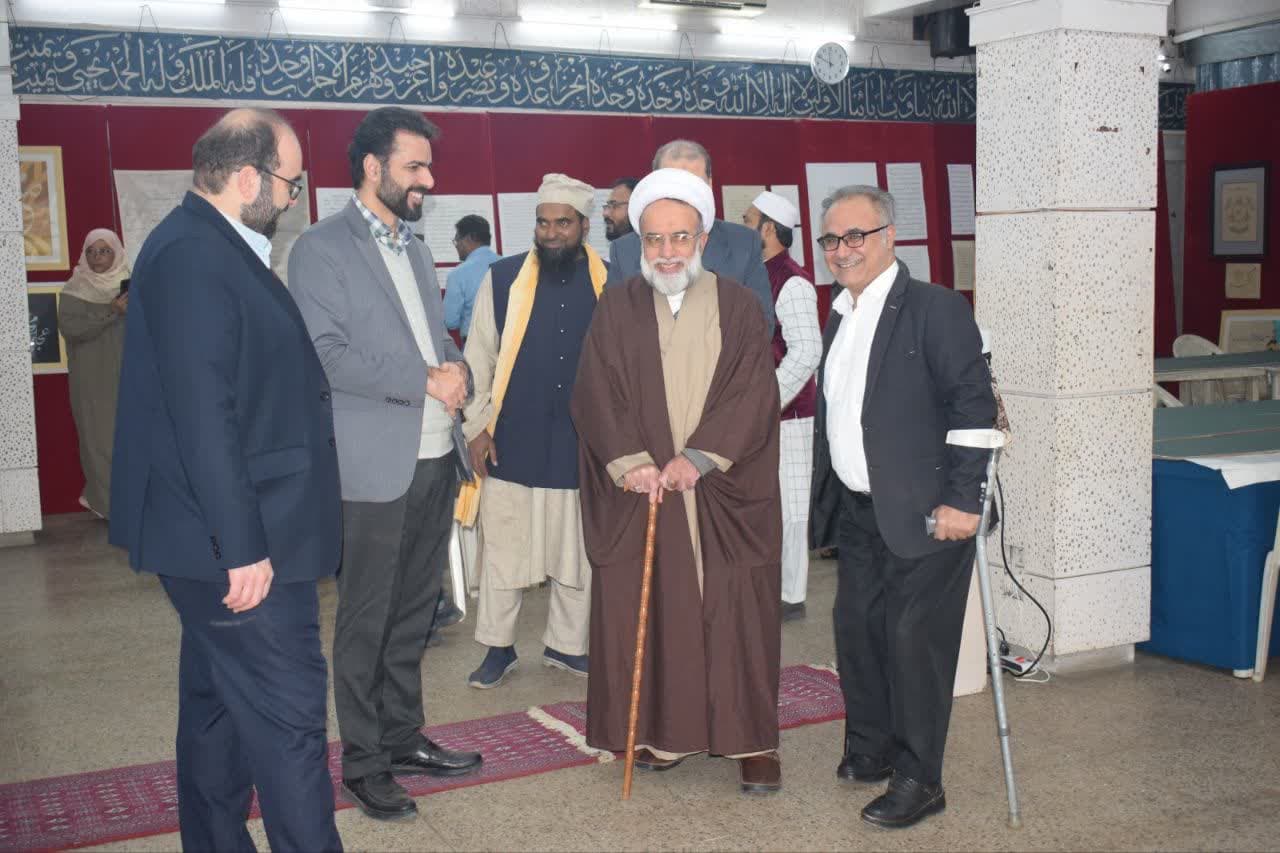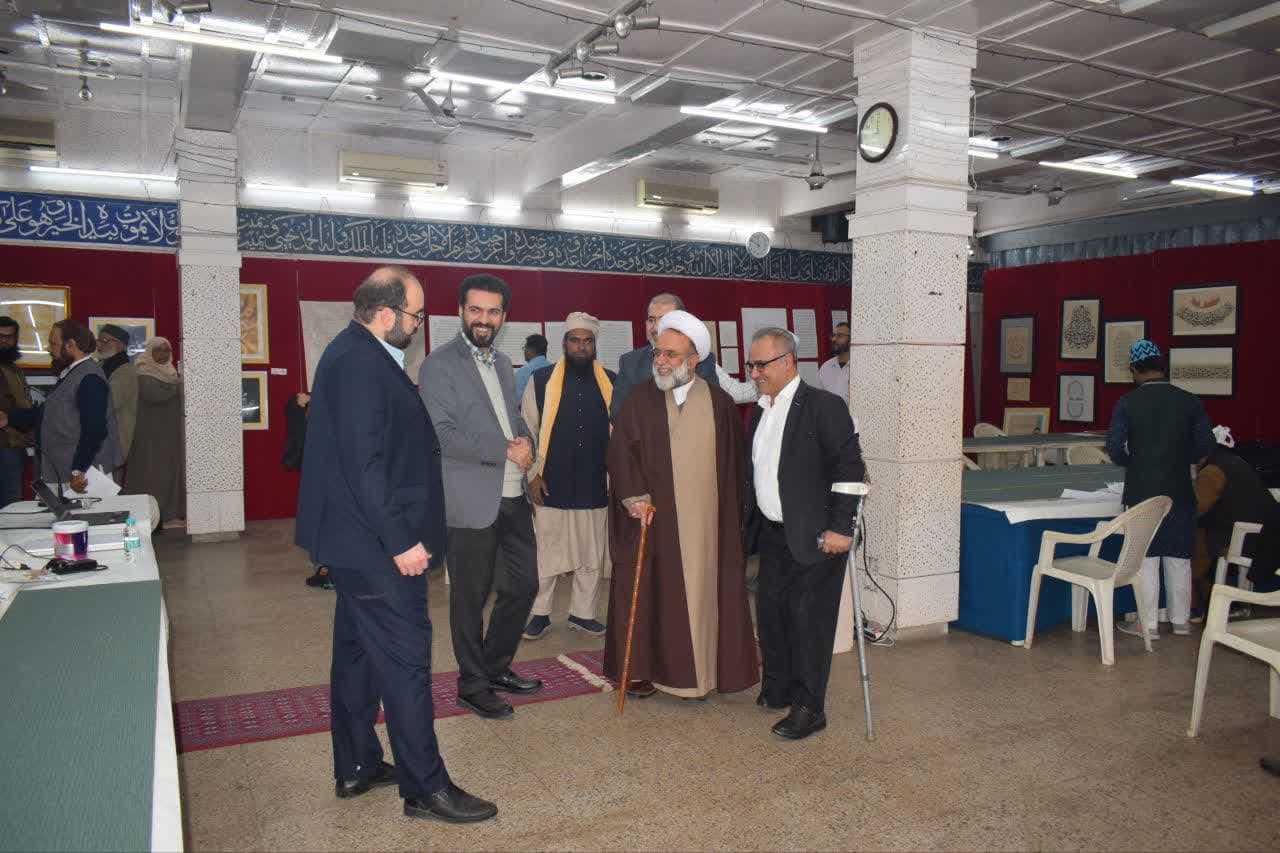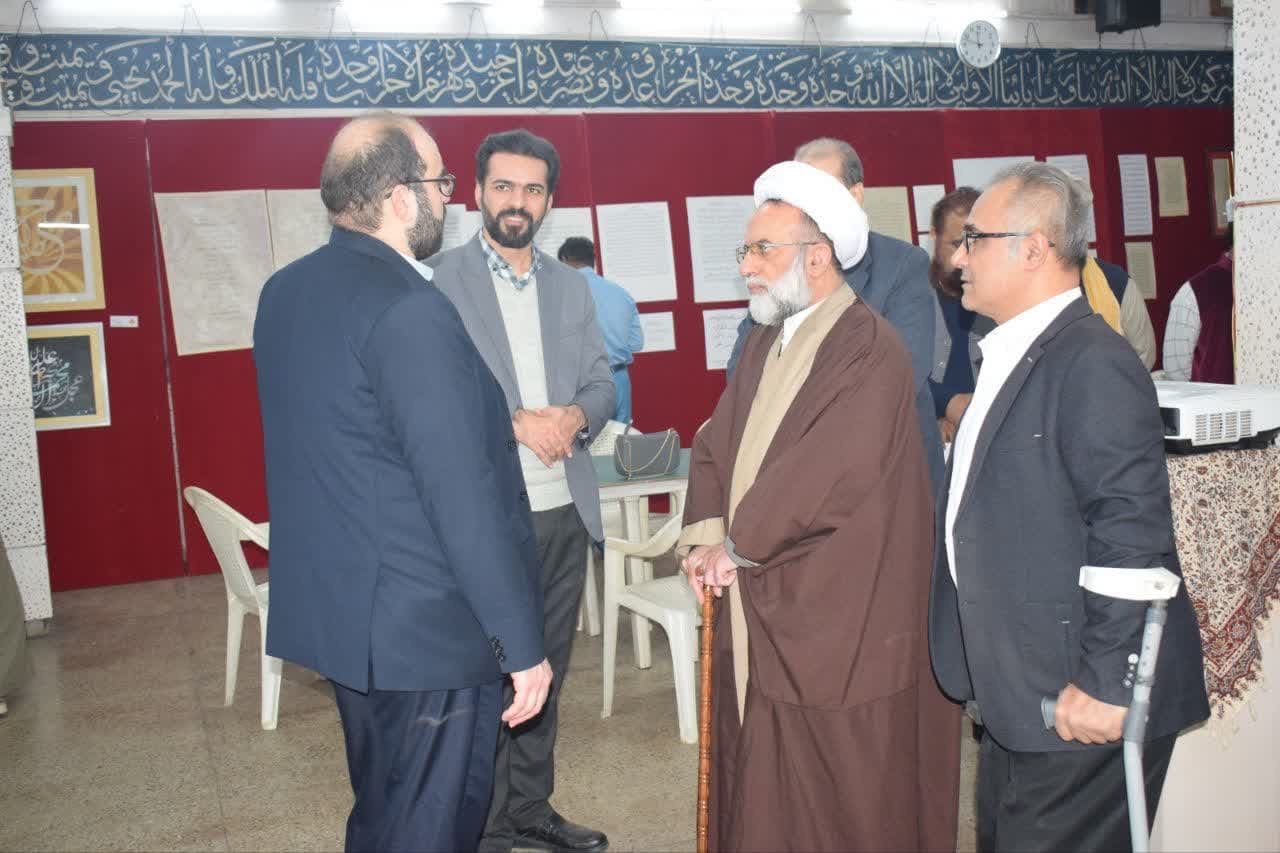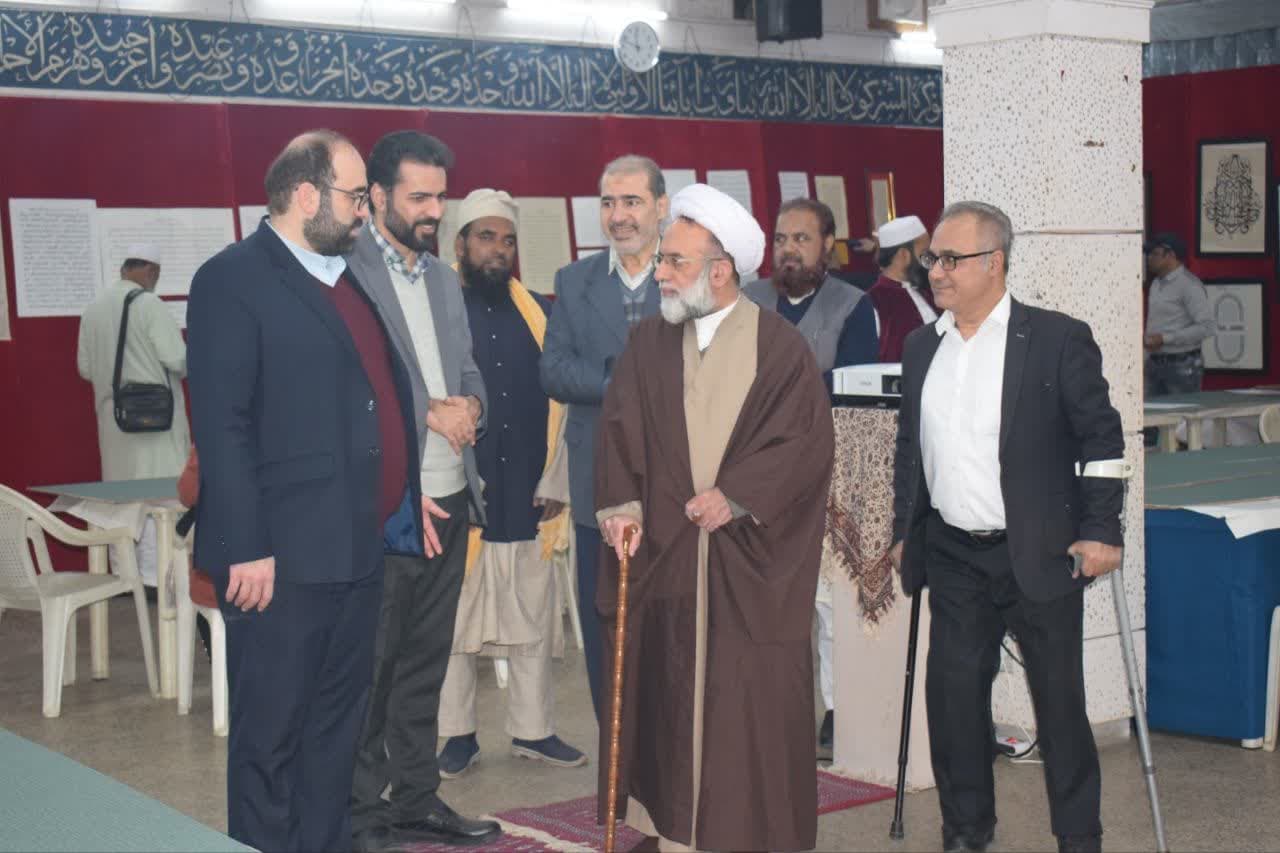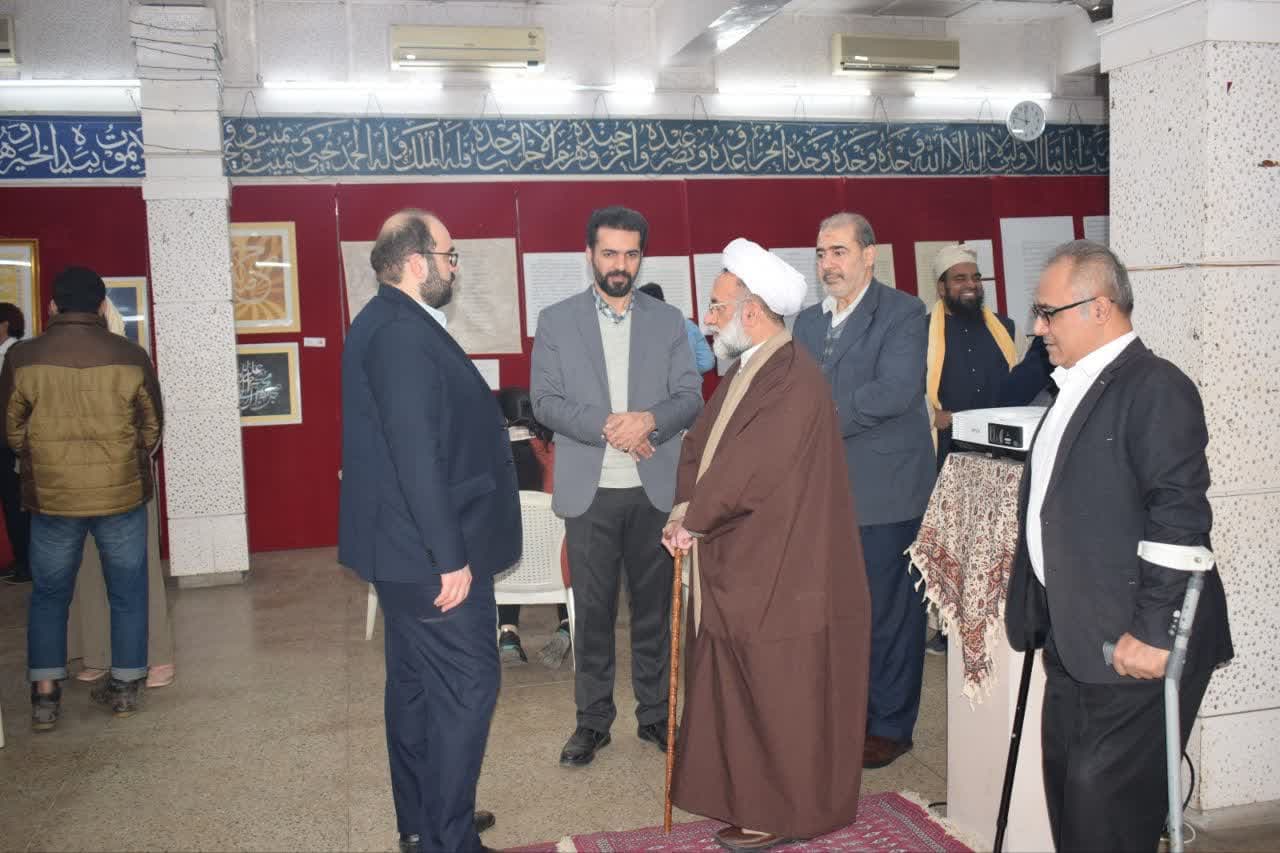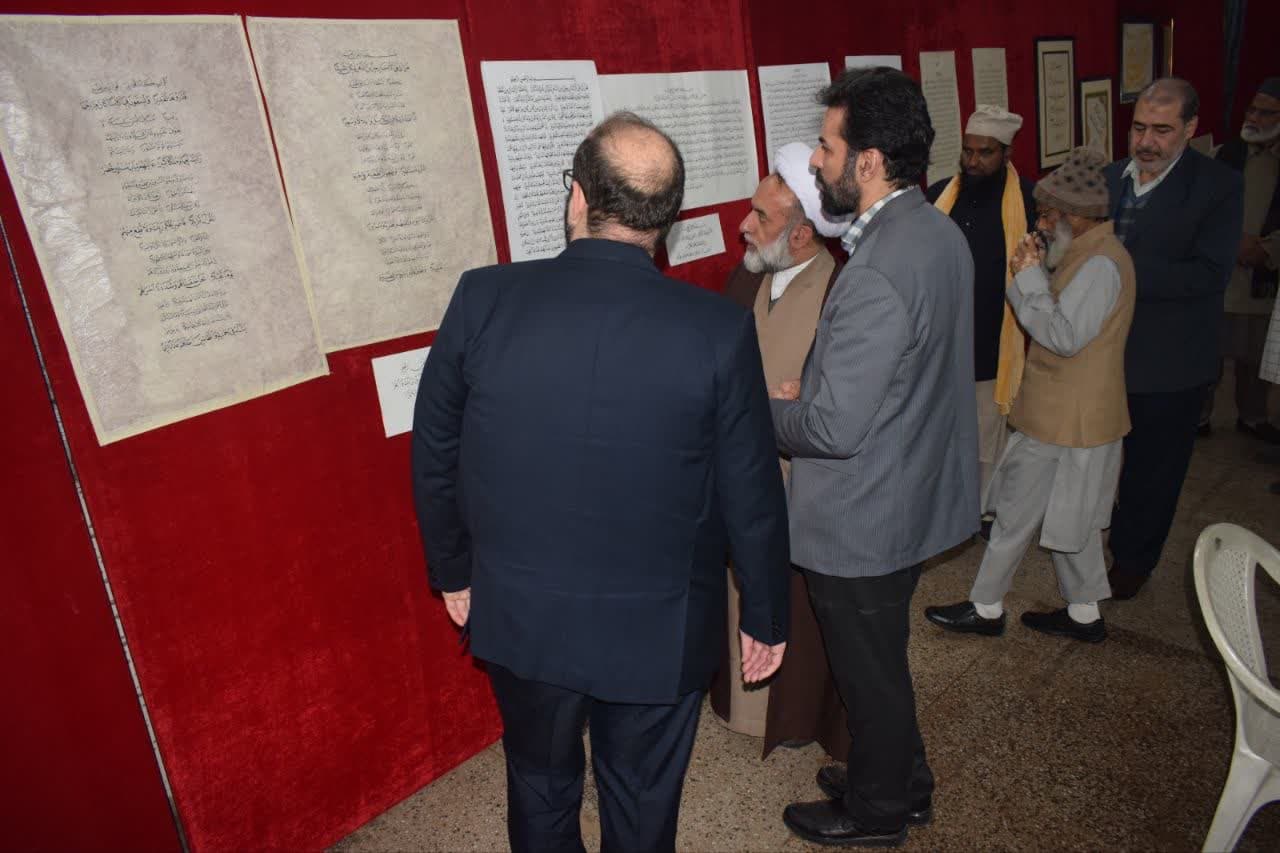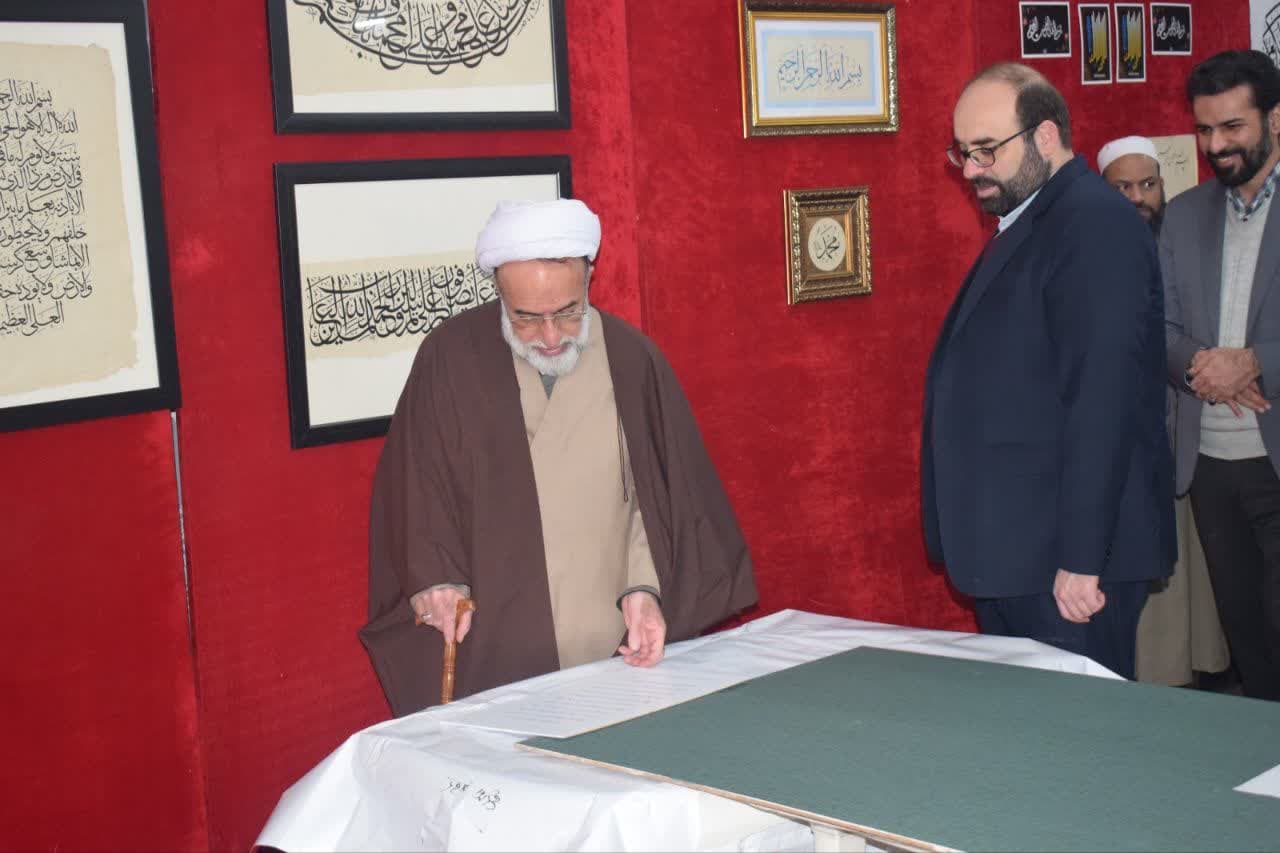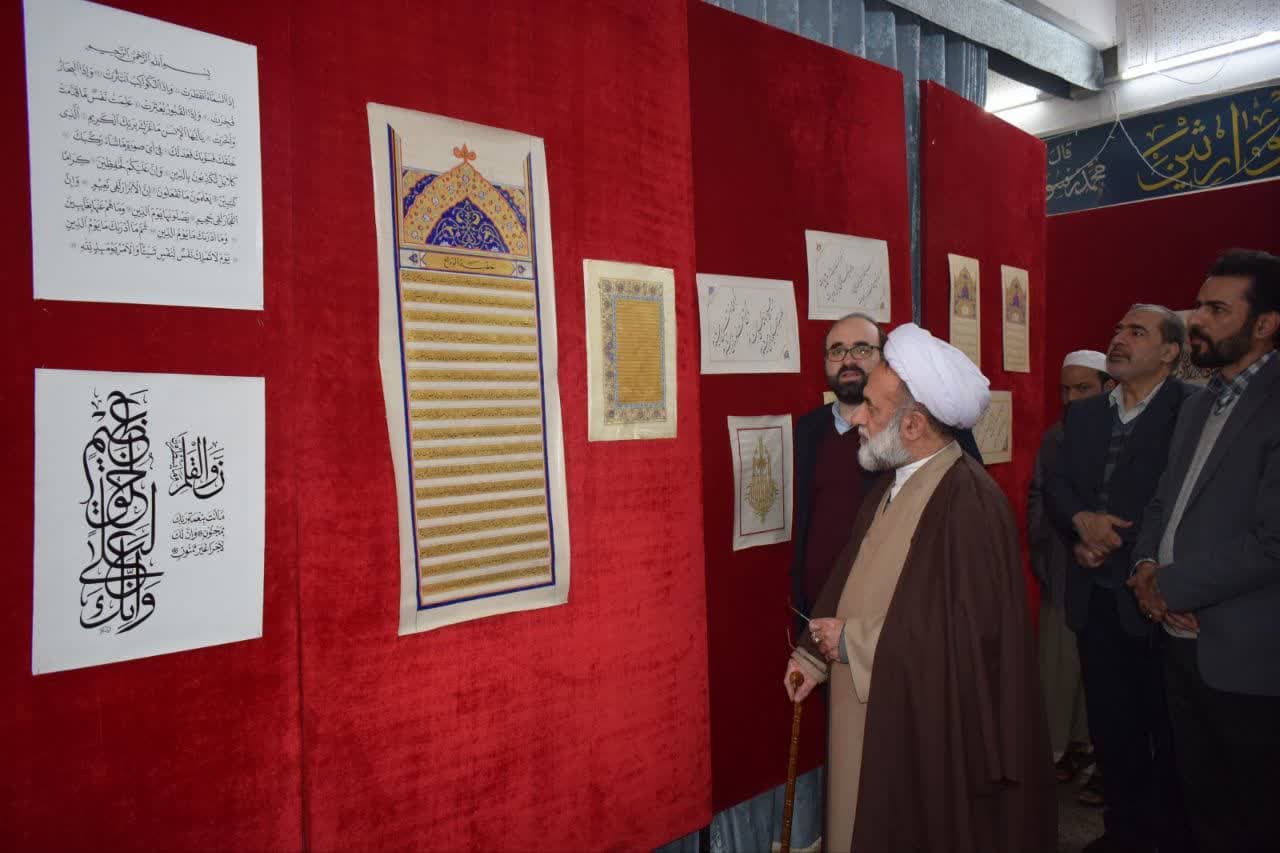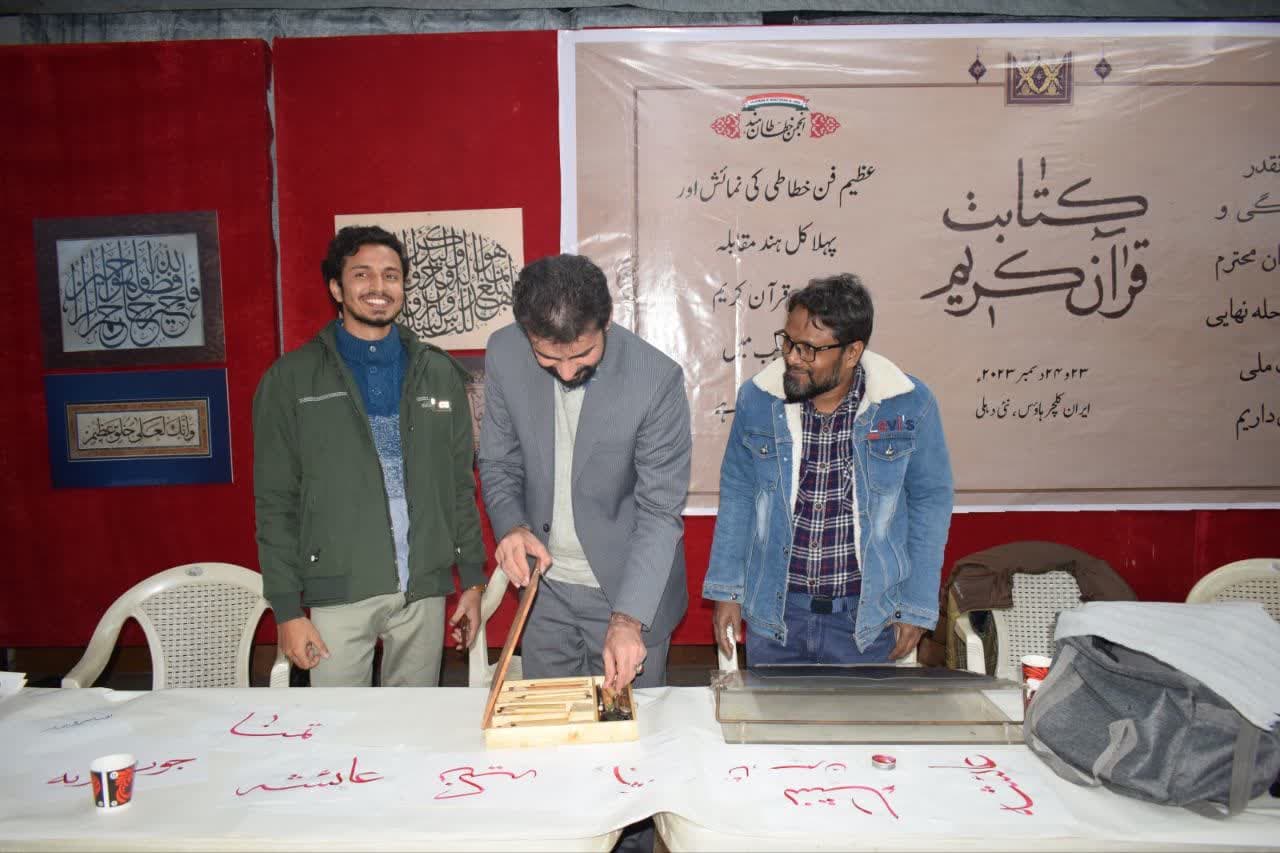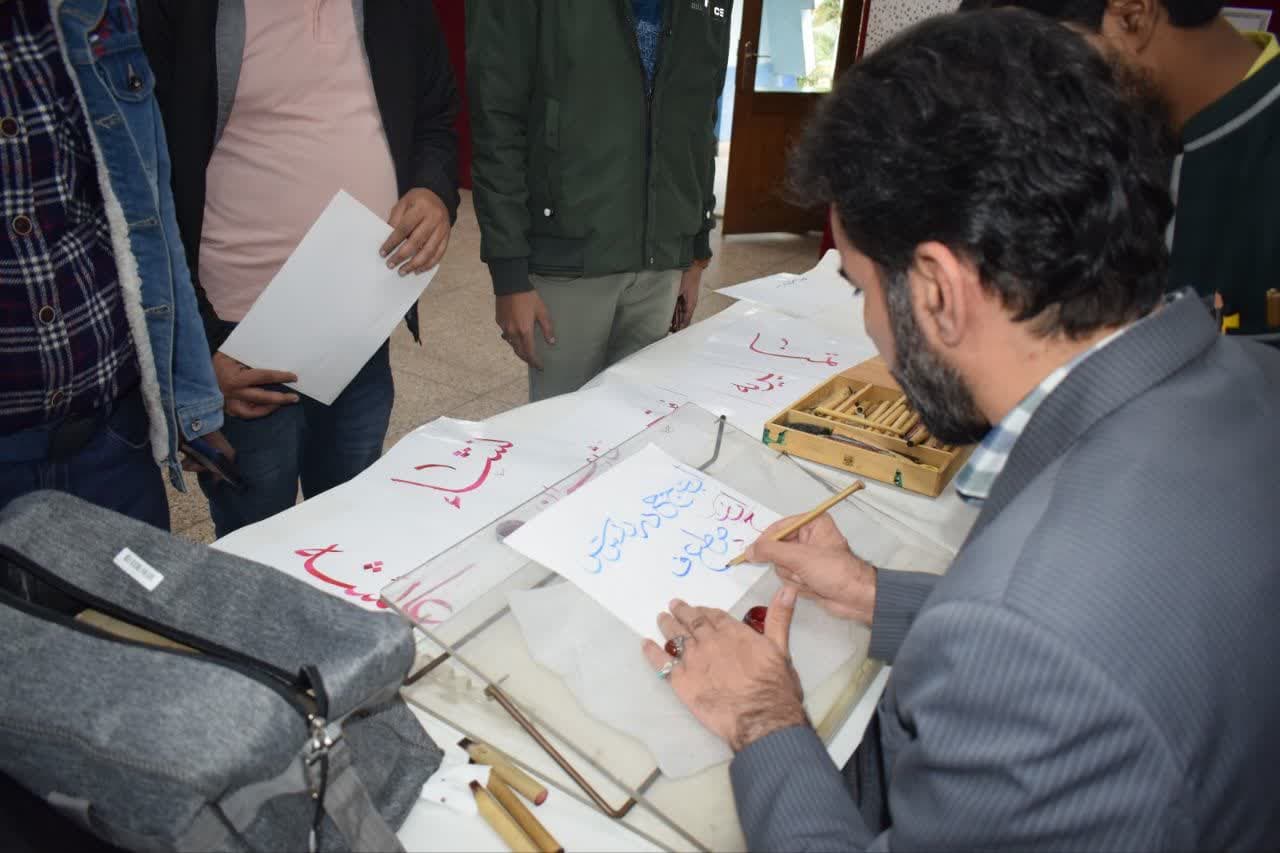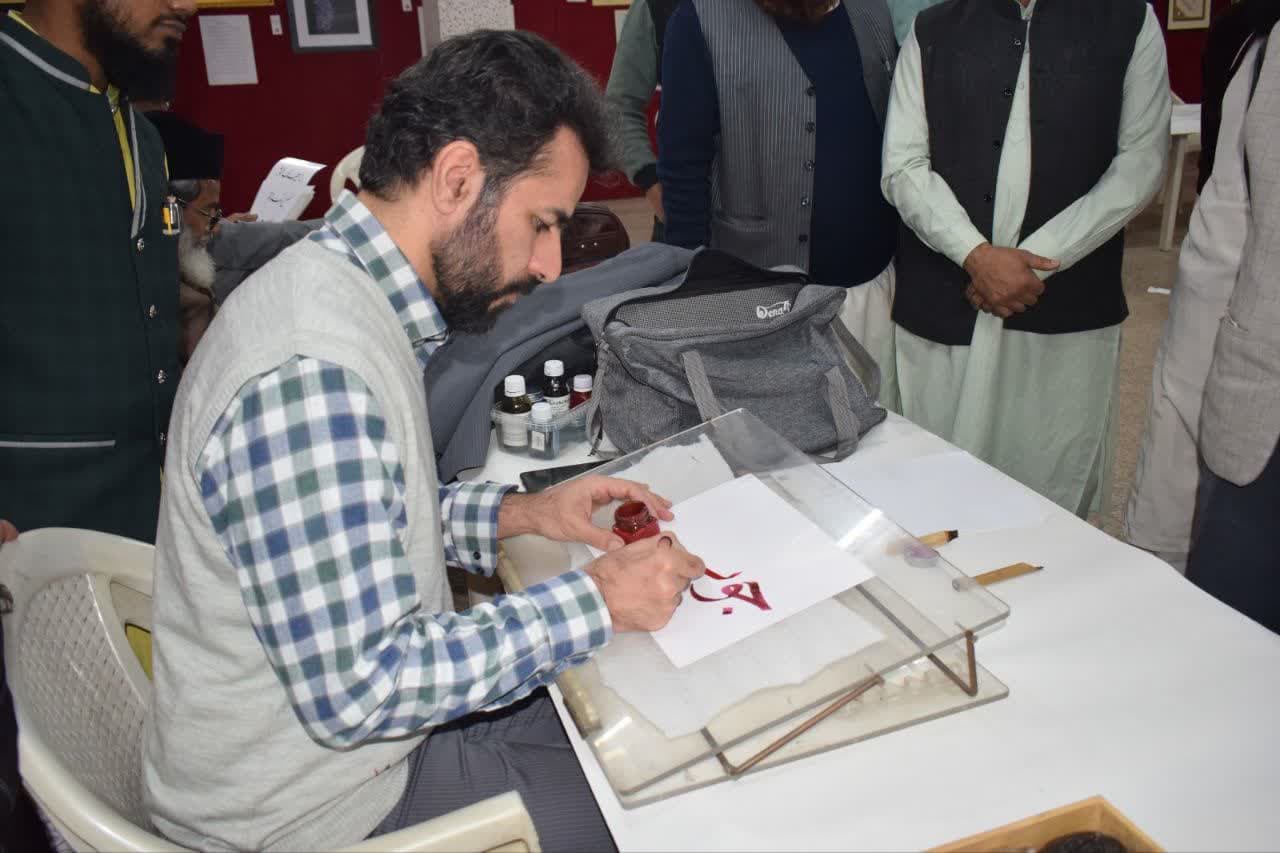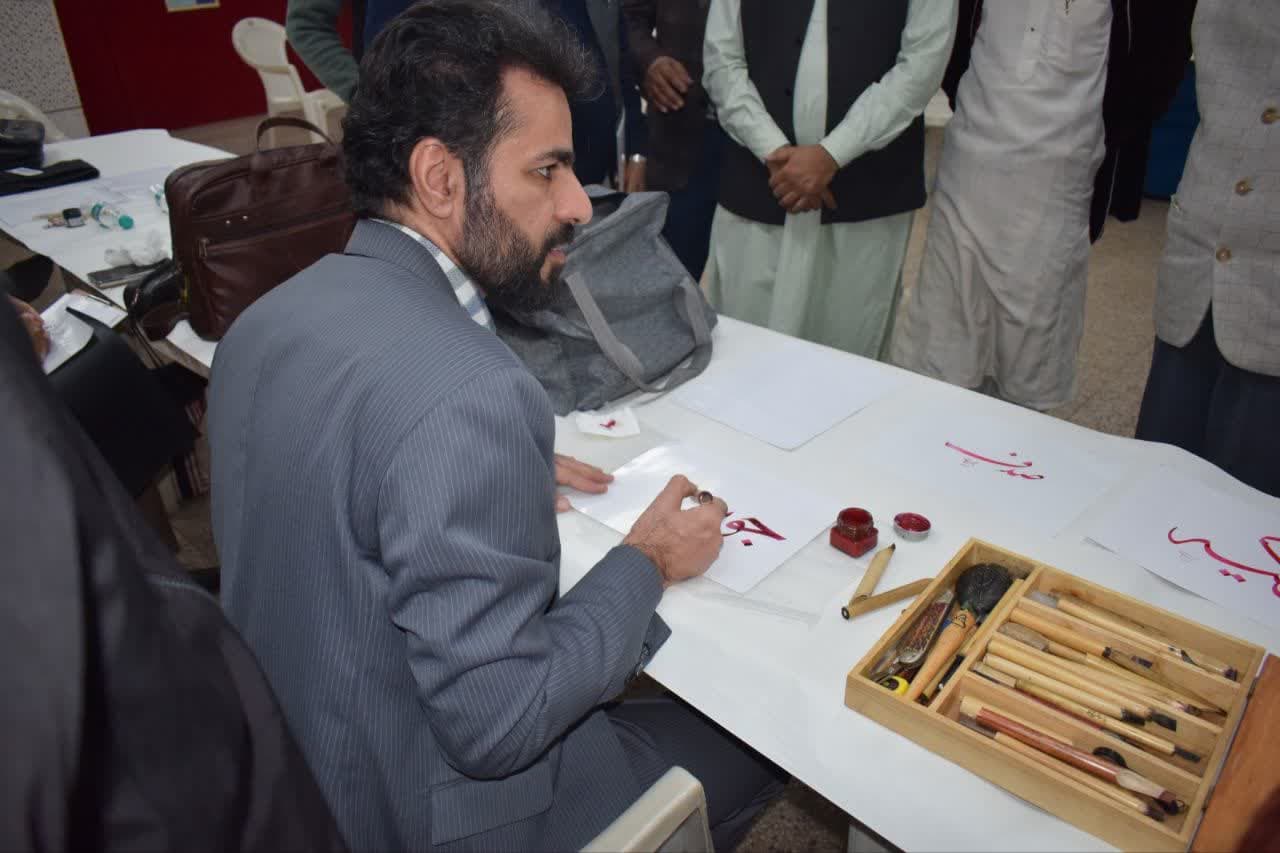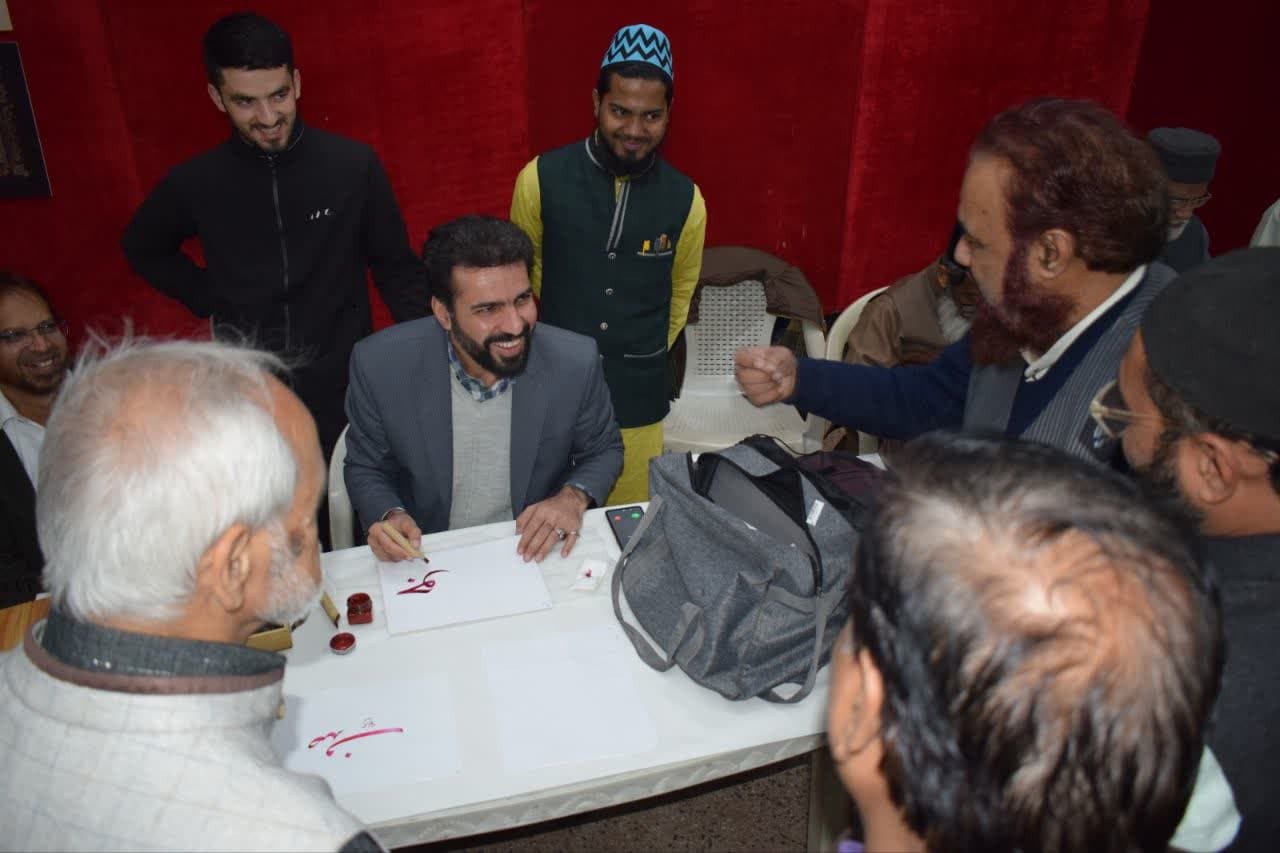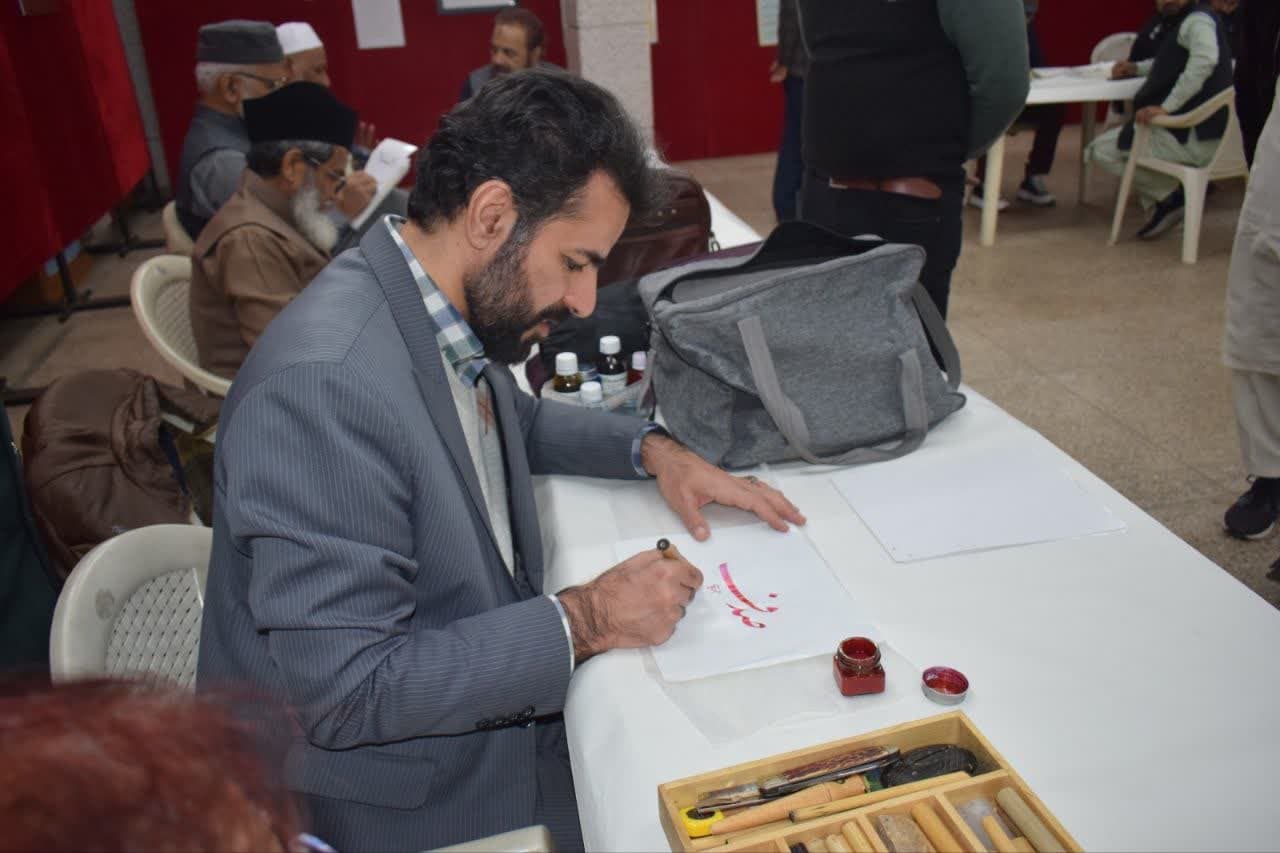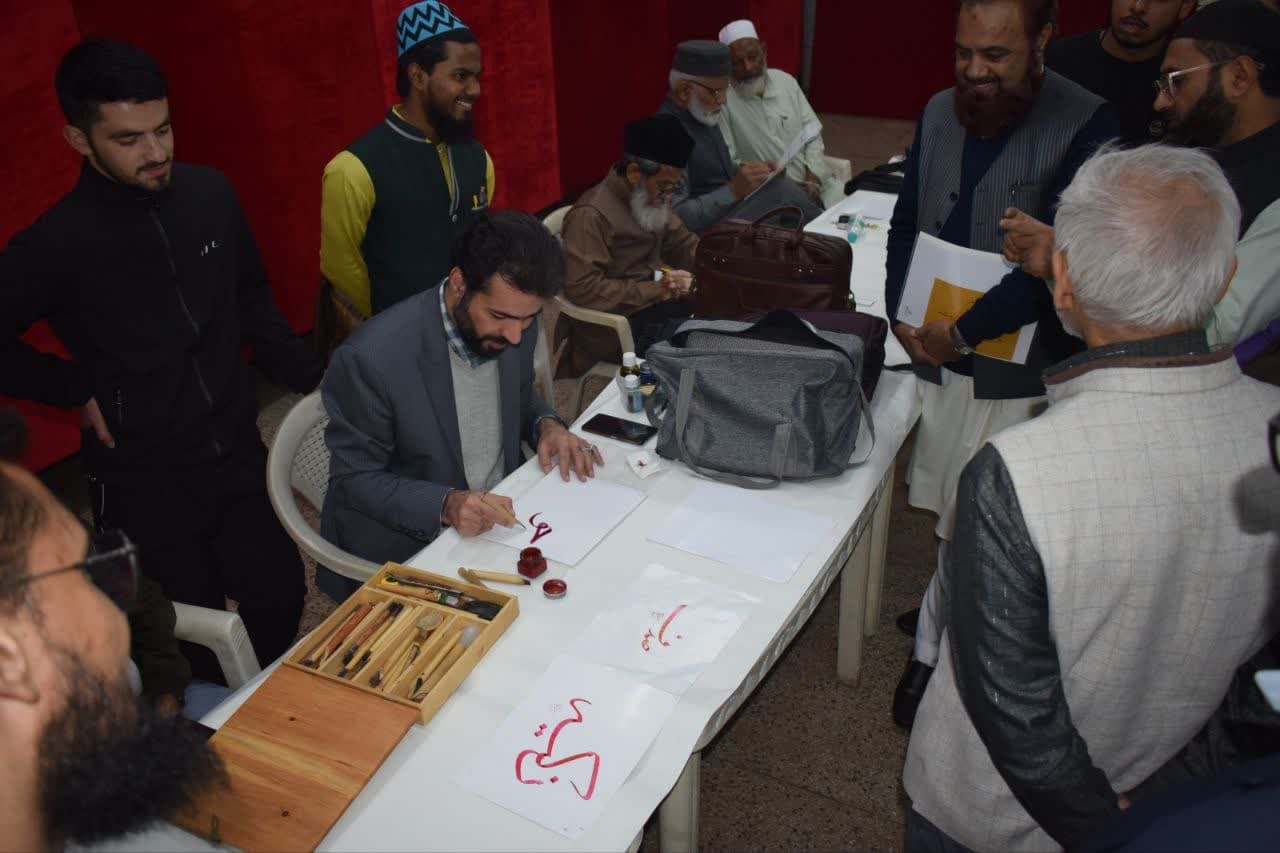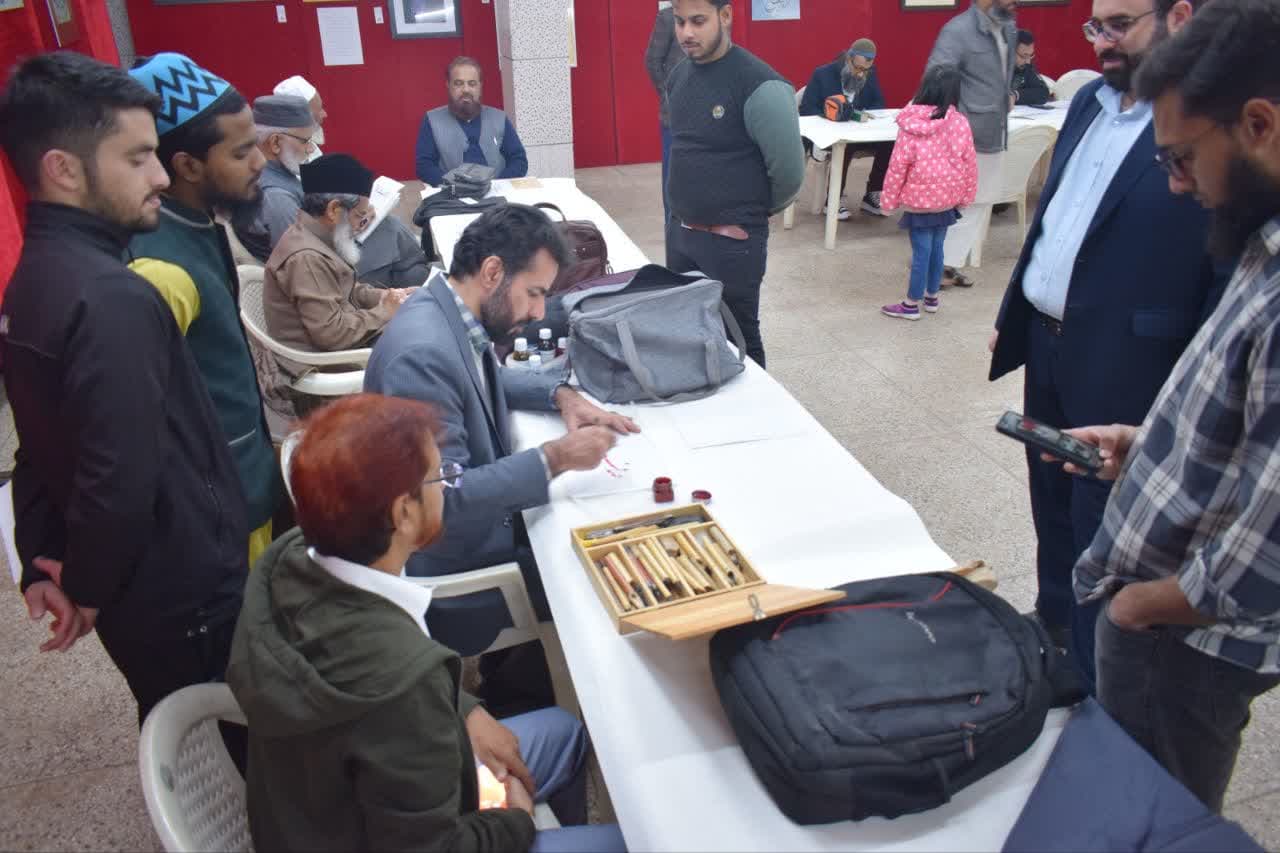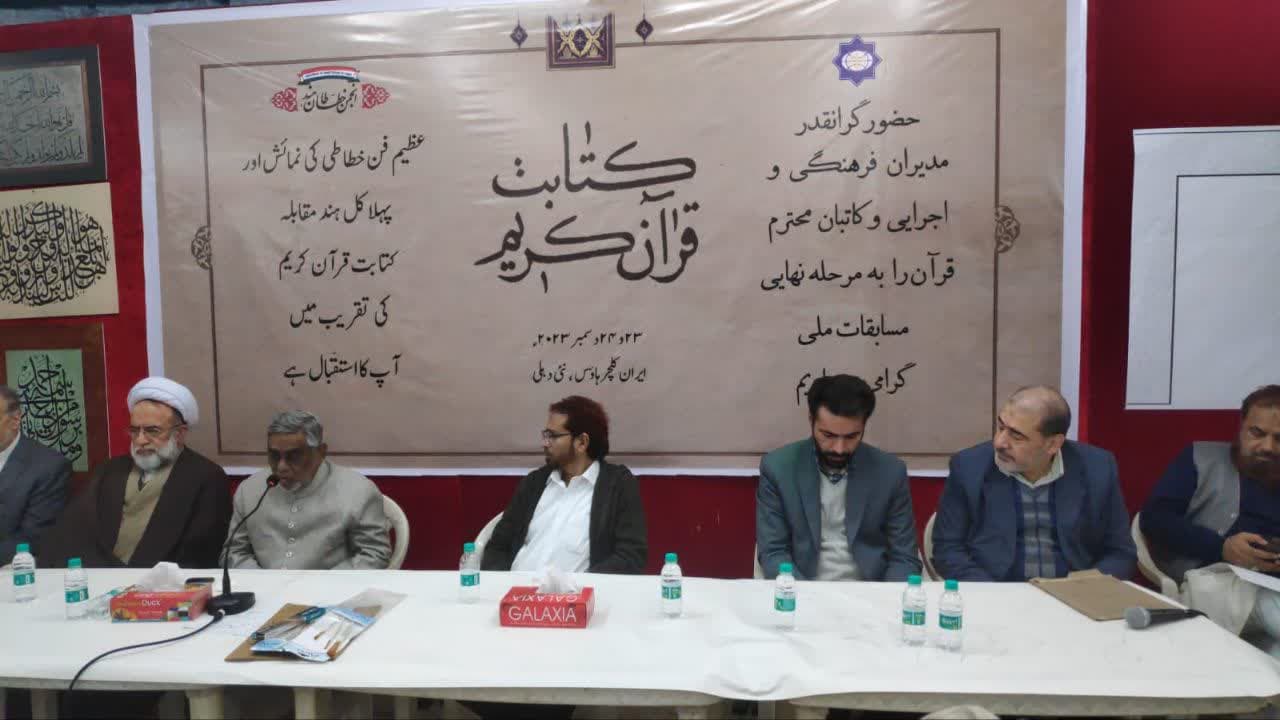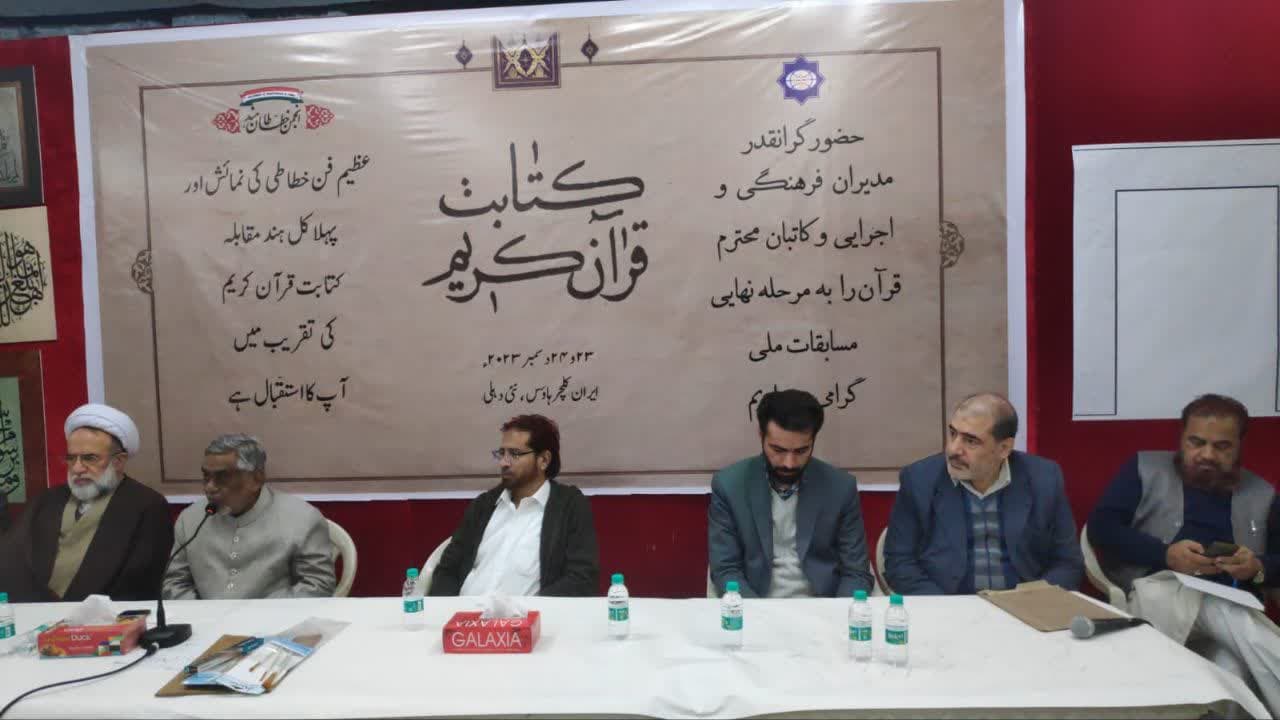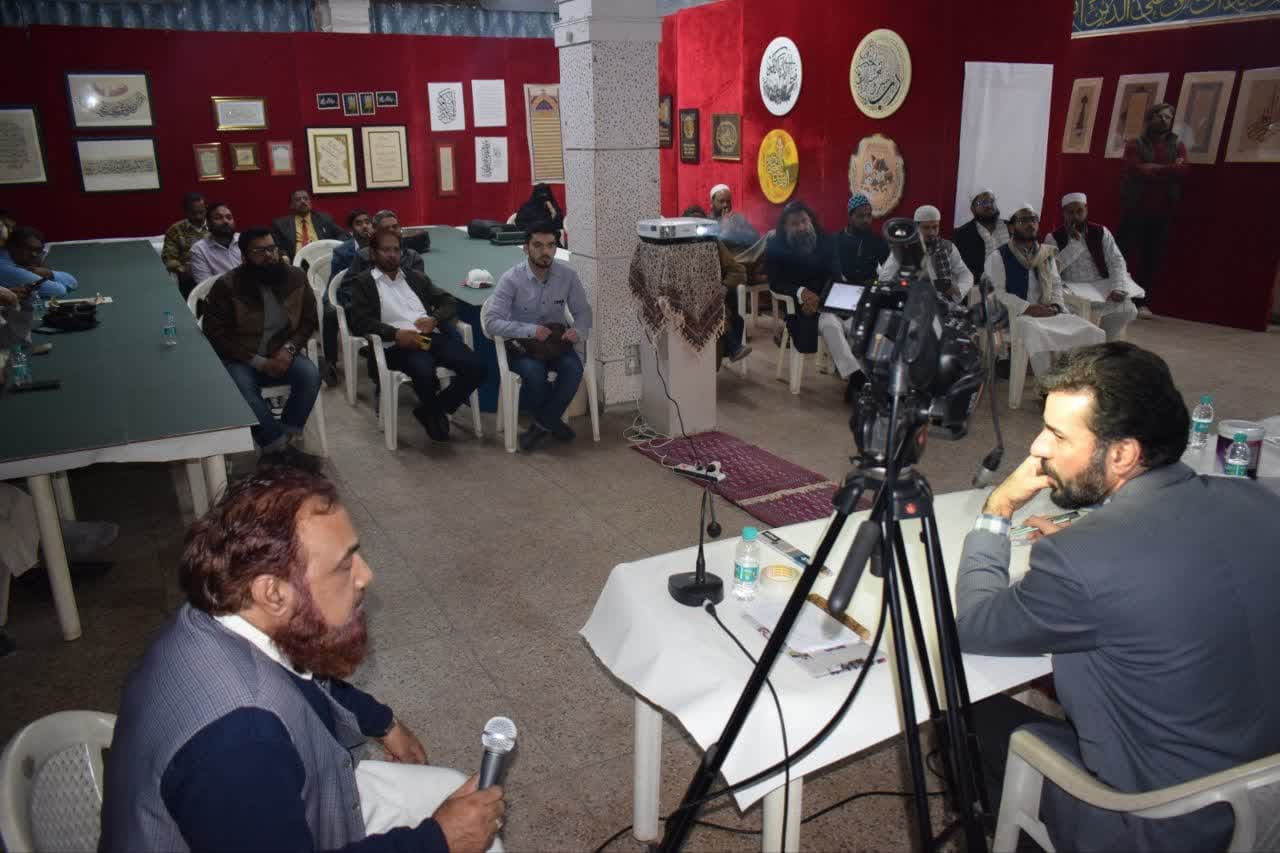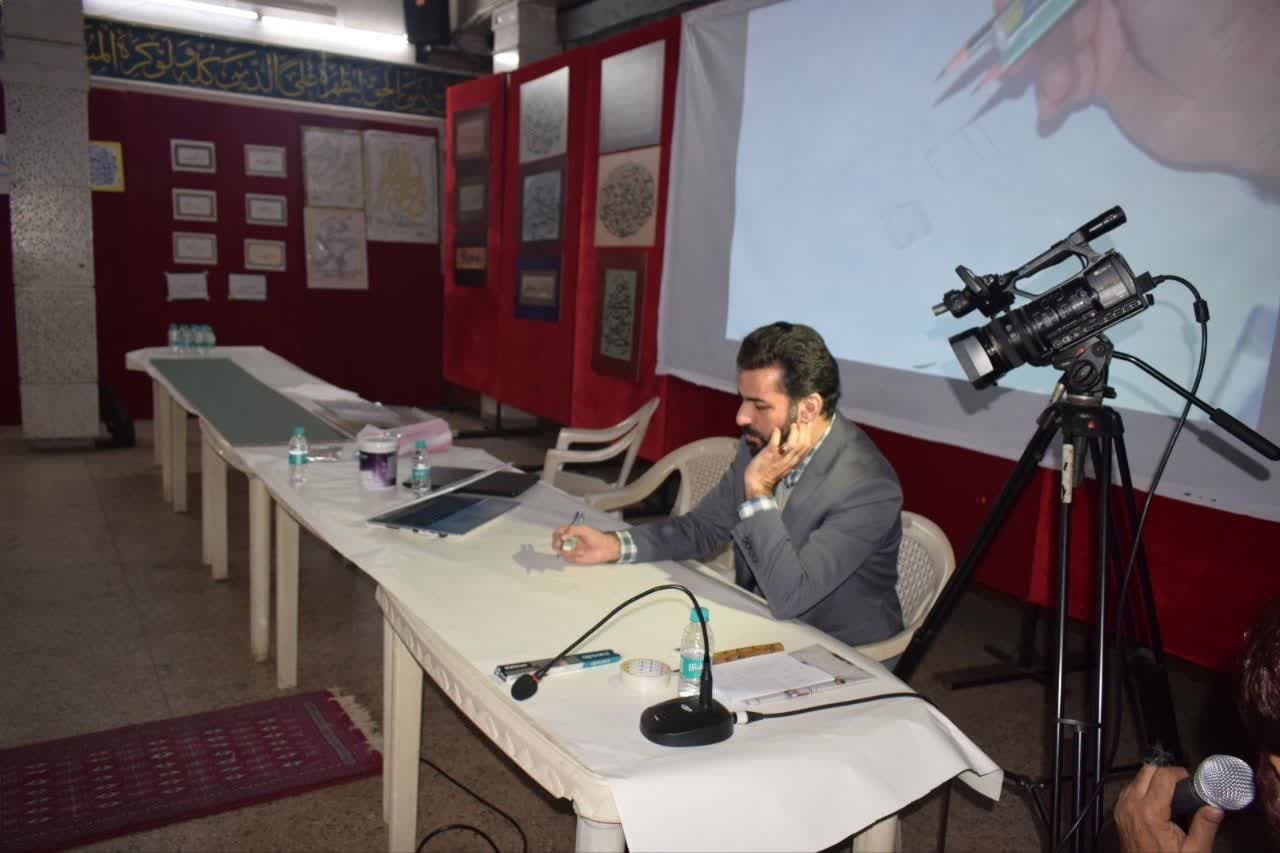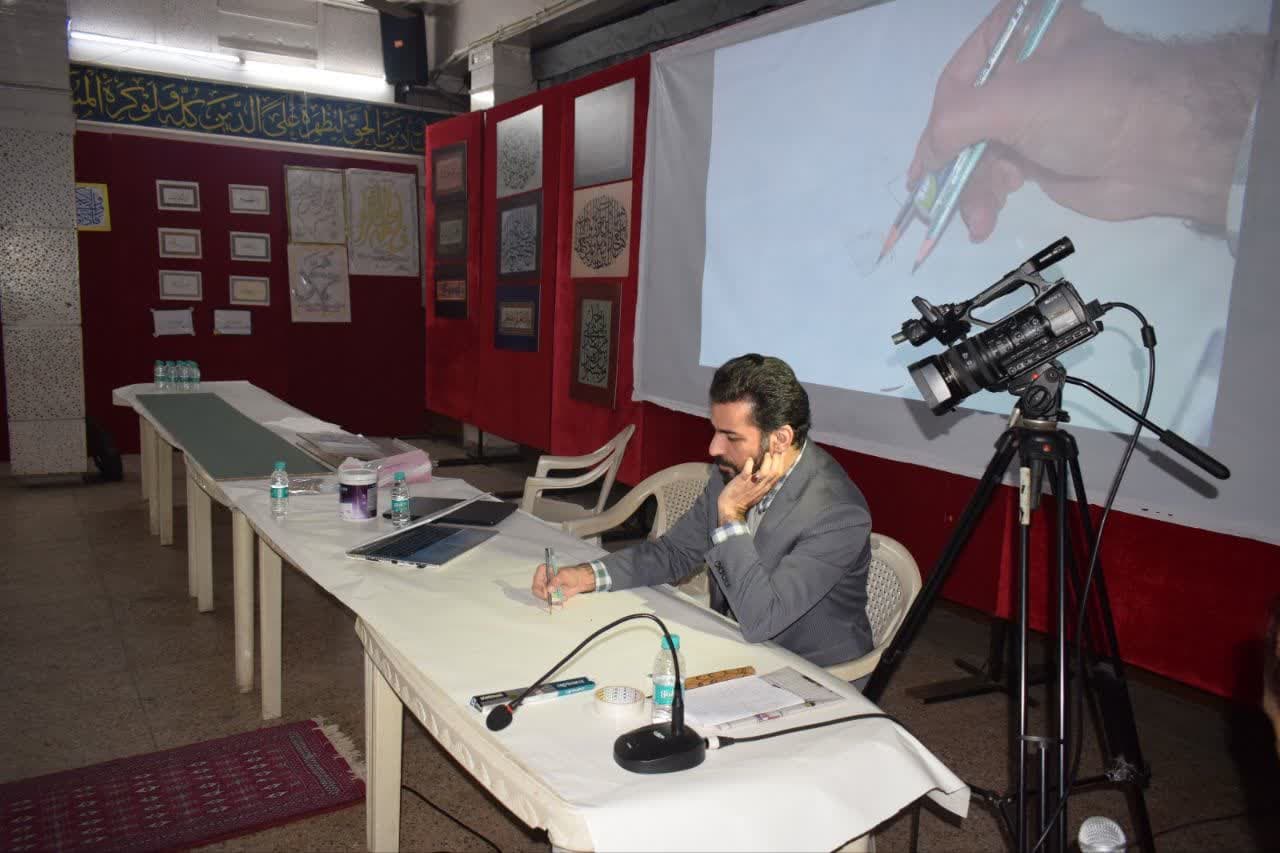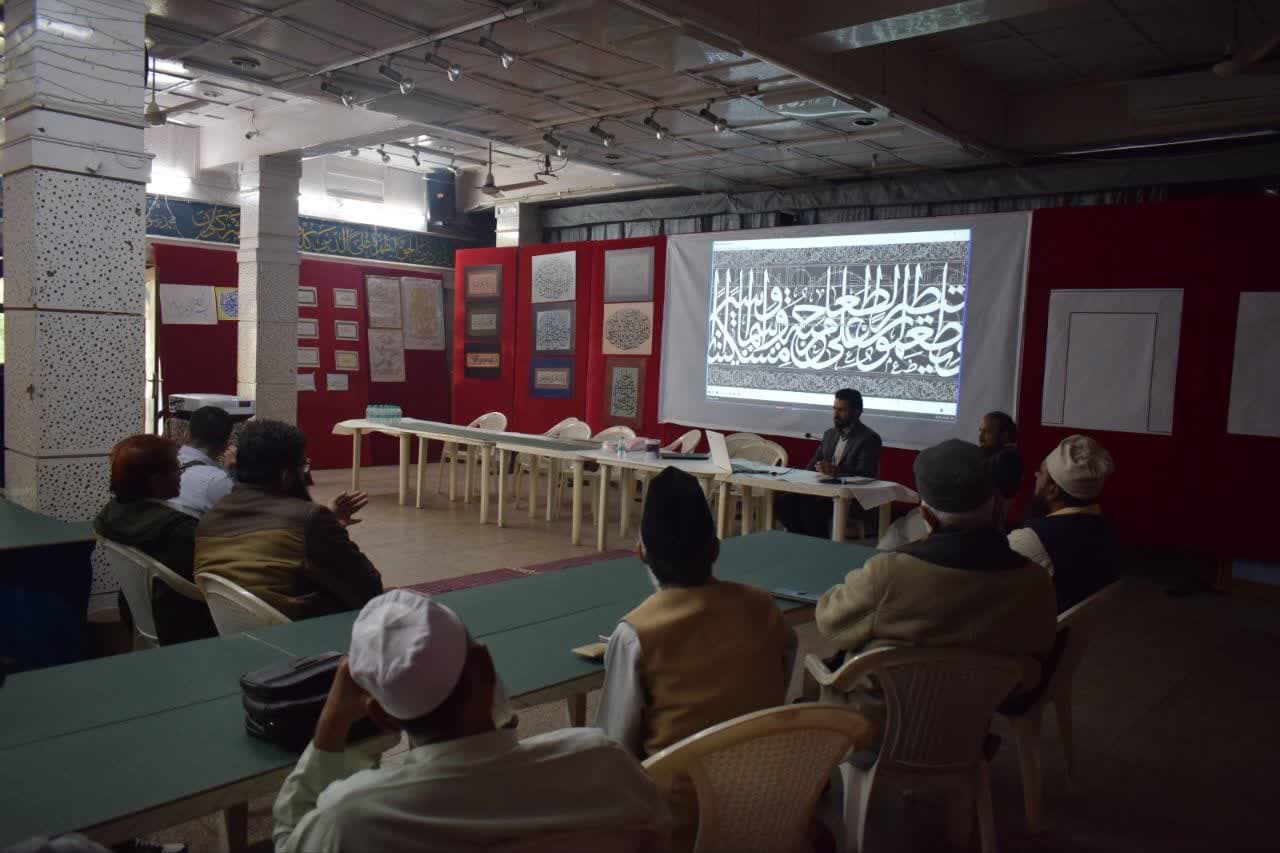For several years, the Iranian Culture House in New Delhi has been working to teach and promote the Persian language and the arts related to Iranian calligraphy in India. Last year, it was also established with the efforts of the former esteemed advisor of the Indian Calligraphers Association and held the first calligraphy event with this association. But this year, in a revolutionary move, for the first time, the National Quran Calligraphy Competition was held for two days in cooperation with the Indian Calligraphers Association and with the presence and participation of experienced and young Indian Muslim calligraphers from January 25.
In this competition, 25 renowned calligraphers from 10 Indian states competed for 2 days in three categories: Naskh surah writing, Nastaliq surah writing, and Iranian naskh The call for this round of competitions was published on September 10, 1402, and those interested had until December 14, 2019, to send their works via e-mail to the Secretariat of Cultural Affairs of Iran in New Delhi.
Dr. Ehsan Pournoman, head of the Holy Quran Calligraphy School and a distinguished Iranian calligrapher, and Professor Mukhtar Ahmad Khattat from Bangalore were the judges of these competitions. The aim of holding these competitions was to expand the culture of Holy Quran calligraphy and Islamic calligraphy, promote Iranian and Indian Naskh and Nastaliq calligraphy, and support the noble copies of the Holy Quran and the scribes of the Holy Quran. Other goals of the Iranian Culture House include providing the necessary training to train committed and young Indian artists by holding an inscription writing workshop by Dr. Ehsan Pournoman, networking art groups and creating a spirit of teamwork, expanding Quranic art, and strengthening scientific, cultural, artistic, and media relations and interactions between the two countries.
Calligraphy Workshop and Exhibition of Quranic Calligraphy Works
One of the side programs of this event was the holding of a calligraphy and inscription writing workshop by a professor dispatched from Iran, Mr. Ehsan Pour Noman. In addition to experienced calligraphers from India, a large number of male and female students from different schools participated in this workshop. At the end of this workshop, an inscription writing event was held with the aim of renovating the inscriptions of the Hussainiyeh of the House of Culture. Over two days, with the participation of an Indian professor and Professor Pour Noman, more than forty meters of inscriptions including verses of the Quran and hadiths of the great Prophet (PBUH) were written in Thuluth script and replaced the old inscriptions.
Also, a Quranic exhibition of works by Iranian and Indian calligraphers was held at the House of Culture of the Islamic Republic of Iran. Enthusiasts and viewers were amazed to see the diversity, breadth, and power of the art of Quranic calligraphy and praised the calligraphers. About 80 works were displayed in this exhibition.
Closing Ceremony
The closing ceremony of the first national Quran calligraphy competition in India was held on Sunday evening, January 23, with the presence and speeches of Hojjatoleslam wa Muslimin Mahdavipour, the representative of the Supreme Leader in India, Dr. Fariduddin Farid Asr, the cultural advisor of the Islamic Republic of Iran in New Delhi, Dr. Ehsan Pournoman, an Iranian judge, Mukhtar Ahmad, an Indian calligrapher, Professor Akhtar al-Wasa, and Dr. Seyed Farooq, at the Iranian Cultural House in New Delhi.
At this ceremony, Hojjatoleslam wa Muslimin Mahdavipour, the representative of the Supreme Leader in India, who was present as a special guest at the program, said in his speech: Calligraphy has existed since the early days of Islam and has been remembered until today, and therefore this art is very important in the history of Islam.
The representative of the Supreme Leader in India added: Quran scribes are promoters of Islamic morality. They promote Islamic teachings and morality with their beautiful calligraphy. Our duty is to publicize the divine message.
Hojjatoleslam and Muslimin Mahdavipour noted: If you enter any house in Iran or go to any institution, you will definitely see a calligraphy frame.
Calligraphy: The Heritage of the Holy Quran
Dr. Farid Asr said in his speech: While calligraphy programs have been held here many times, and this is the second program after the establishment of the Indian Calligraphers Association; but this is the first time that the Iranian Cultural House is holding a Holy Quran calligraphy competition and a Quran inscription writing workshop.
The Iranian Cultural Counselor in New Delhi said: The art of calligraphy has a direct connection with the Holy Quran and is the heritage of the Holy Quran. Therefore, it is a pure Quranic art and the most important example of sacred art. Therefore, promoting calligraphy not only helps to preserve Arabic, Persian, and Urdu calligraphy, but is also a pure religious work.
Dr. Farid Asr said: Our effort is to hold a Quran calligraphy competition here every year, like the Quran memorization and recitation competitions, and those who have won places in these competitions are introduced to Iranian artistic events.
Professor Mukhtar Ahmad, an Indian judge from Bangalore, also said in his speech: Iranian calligraphers have worked very hard in the field of calligraphy education. Although computers have had a significant impact on the developments in calligraphy in the last few years, Iranian calligraphers took advantage of this opportunity and developed calligraphy.
Professor Akhtar Al-Wasey said: I congratulate the Iranian Cultural House for bringing Indian calligraphers here. He added: Whenever I went to Iran, I did not see a hotel whose name was not written in Nastaliq script.
The Holy Quran is our heritage
Dr. Ehsan Pour Noman, an Iranian judge, provided detailed explanations about the art of calligraphy and introduced the audience and calligraphers to the punctuation marks of the art of calligraphy.
He explained about the art of calligraphy on the basis of words in different lines and said: Calligraphers should always write with ablution and this art is an Islamic art.
The Iranian judge said: The Holy Quran is our heritage. We must preserve it and pass it on to future generations.
At the end, the best were selected by Iranian and Indian judges and five people were awarded with certificates of appreciation and cash prizes. The names of the winners are:
Mohammad Ghousuddin Azim (Hyderabad): First place in Iranian manuscript writing
Ataullah Asadi (Maharashtra): Second place in Iranian manuscript writing
Shazar Ahmad (Bareilly): First place in Naskh surah writing
Ayub Akram (Aligarh): Second place in Naskh surah writing
Zafar Reza Khan (Tunk, Rajasthan): First place in Nastaliq surah writing
Suggestion:
In India, more than seventy institutes and workshops are engaged in calligraphy education. In order to develop the art of calligraphy scientifically and technically, which also promotes the Persian language, the Holy Quran and Islamic teachings, it is necessary to send distinguished Iranian professors to India every year for short one-month courses with the cooperation and financial support of the Iranian Calligraphers Association and the Endowment and Charitable Affairs Organization and hold calligraphy workshops under the guidance of consultants in different states.



